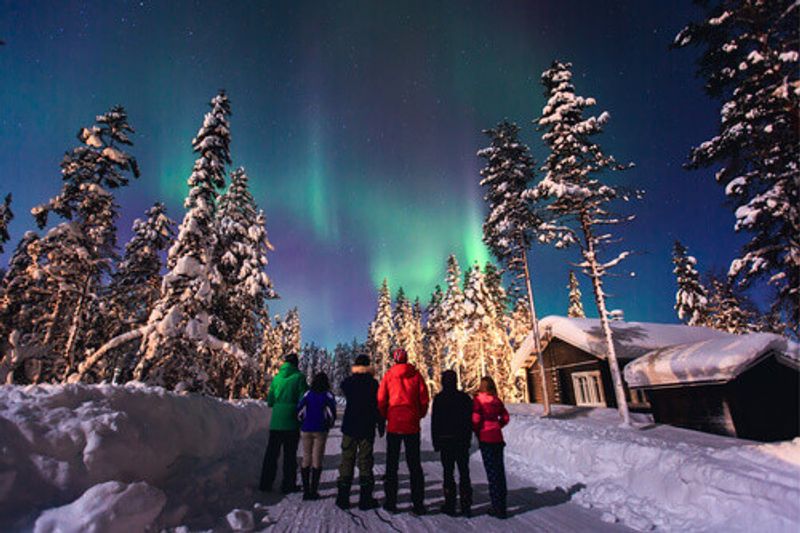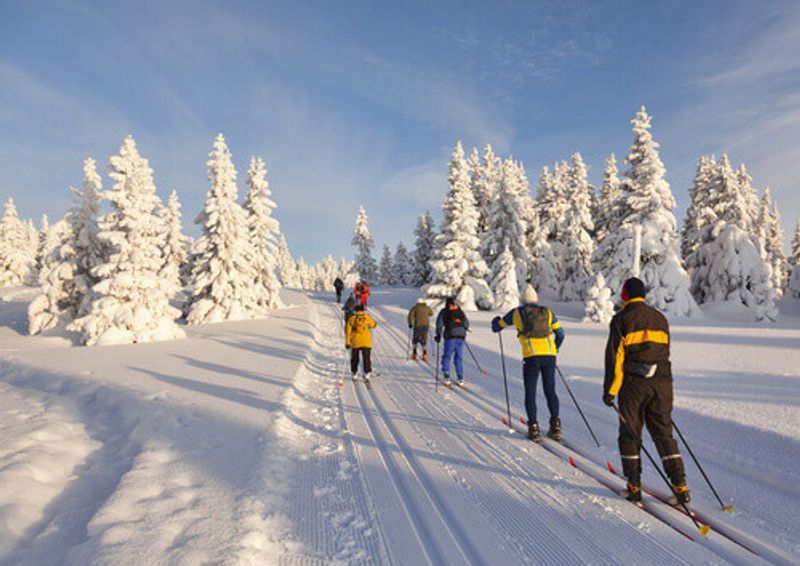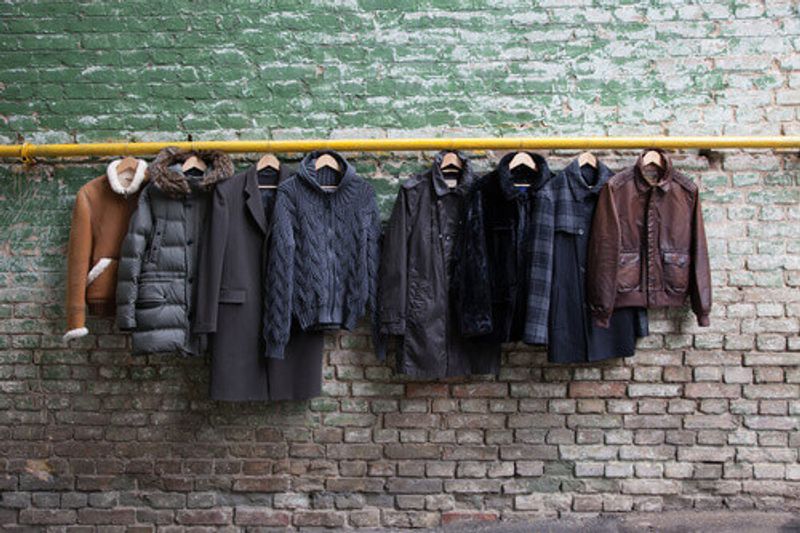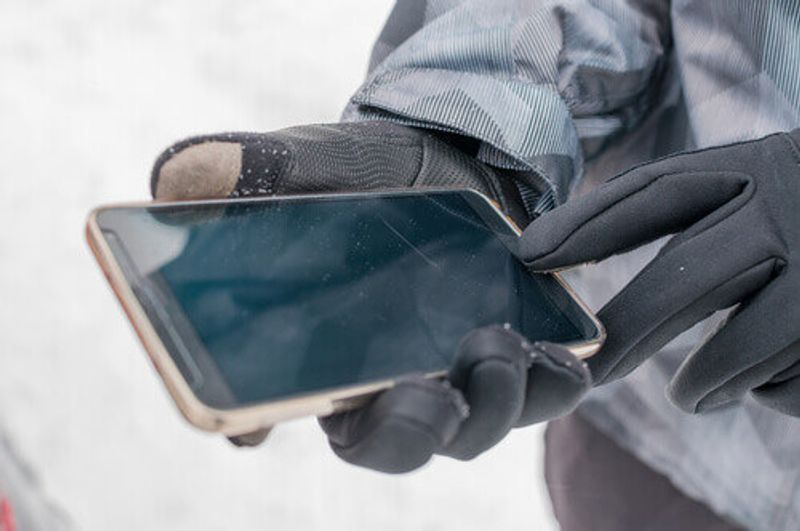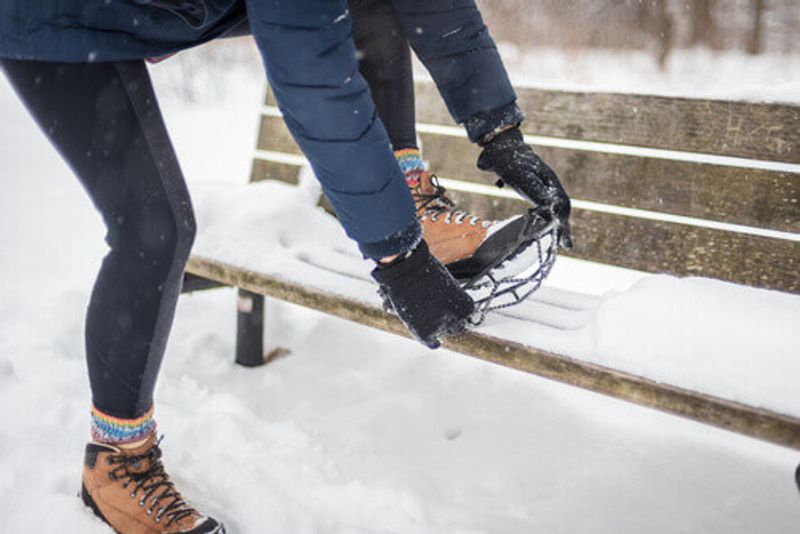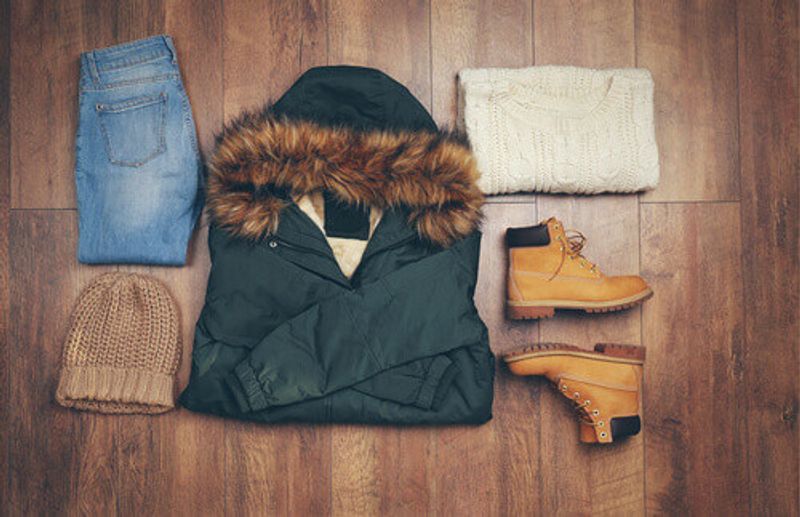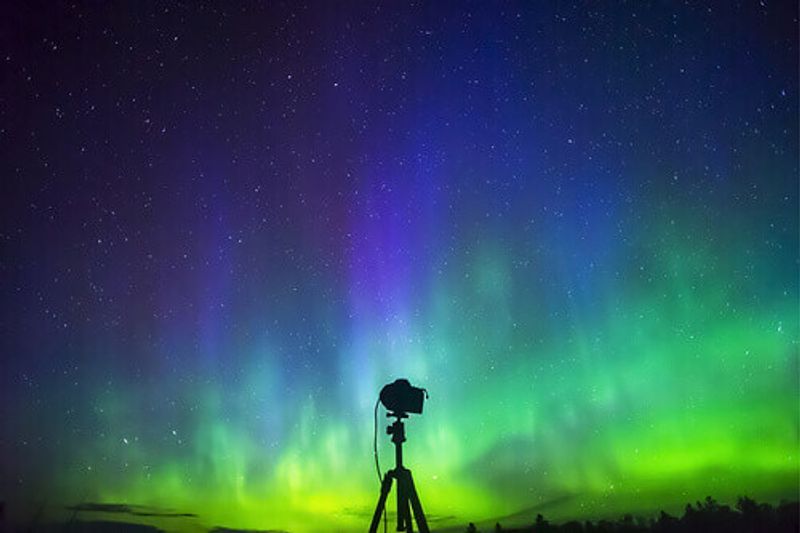Packing can be the least enjoyable part of a vacation. Pack too much and you’re left lugging about a heavy suitcase, pack too little and you may be stranded without core essentials. And if you’re preparing for a Northern Lights trip of a lifetime, careful planning is non-negotiable. A well considered Northern Lights packing list will help you stay comfortable in harsh Arctic conditions and ensure you have everything you need—especially the right clothing for warmth and the gear to capture those mesmerising auroras.
From selecting the best clothing for your Northern Lights tour, to proper photography equipment and the right Northern Lights forecast app, we’ve got you covered. Dive into these winter travel essentials and prepare to witness one of nature’s most dazzling displays.
Northern Lights Essentials: Where to Start
If you’re planning to chase the Northern Lights, packing weather appropriate clothing is absolutely essential. While the weather in Tromso rarely dips below -5°C (23°F) even in the middle of February, the tricky bit is going inland, or a few hours drive away from Tromsø, which can mean a temperature dip of -15°C (5°F) due to its location high above the Arctic Circle.
Regardless of the type of Northern Lights adventure you sign up for, don’t skimp on warm layers. Packaging warm clothing for the extended time spent outdoors at night is essential. Thermal underwear, ski trousers, and a high-quality down jacket should all be on your list, along with insulated winter boots, woolen gloves, a hat, and a scarf. Renting winter clothing in downtown Tromso and other popular tourist spots is possible, but it will be more convenient to purchase your own gear ahead of time.
Northern Lights Clothing 101
Thermals
They may not look very attractive, but thermals will keep you toasty warm and are a must! Just like the base layer, picking the right thermal material is key. Ice Breaker sells a variety of thermal tops and bottoms in varying styles and fit with flatlock seams (which means reduced or no chafing). Depending on your choice of outer layer or windproof pants, the 200 or 260 base tops and bottoms will suffice.
Base Layers
When it comes to winter clothing, base layers are the gift that keeps giving as they keep you warm even when you sweat. Depending on the material chosen—cotton, microfibre, merino wool, silk—they’re also great for layering and keep you from looking like the Michelin Man. Uniqlo’s HEATTECH range is a popular option for base layers. The pieces come in varying thickness and their bio-warming, moisture-wicking ultra warm range is best suited for Norway’s cold climes. Consider base layer fabrics like merino wool or silk for their breathability as they are lightweight and breathable.
Mid Layers
A good mid layer will make all the difference between being comfy or cold. Even if the outside temperature hovers at 0-5°C (32-41°F), a gust of wind will make it feel a lot colder. Pack along a fleece sweater or hoodie, or a good quality wool sweater or down jacket to keep you warm and snug. Consider mid layer fabrics like fleece as it’s lightweight, breathable and quick drying, and cashmere, which is a natural, breathable material with a fine weave. Look at The North Face’s Polartec ™ fleece range which offers the additional benefit of being slim fitting so no additional bulk is added.
Windproof Outer Layer or Ski Pants
A windproof shell is essential to protect against cold winds, which can significantly lower perceived temperatures and increase the risk of hypothermia. If skiing is already part of your plans, a pair of insulated ski pants like W Legendary Pant from Helly Hansen with Helly Tech® construction, will do just the trick. As you may have to walk in deep snow, make sure the pants you choose tuck nicely into your boots to prevent the snow from getting in—the ideal ski pants should be waterproof and breathable. If however, you’re planning on renting a thermal suit, then check out bottoms from The North Face, which can fit underneath these and layer nicely, and double up as your everyday trousers for sightseeing.
Winter Jackets
This is a no-brainer. A warm winter jacket, preferably with wind and water resistant properties and a hood, is absolutely necessary for Northern Lights chasing. While down jackets are fantastic insulators to trap warm air and retain heat, they can be more on the bulkier side and lose insulating abilities when damp. Another option to consider is jackets with synthetic insulators like Columbia’s Omni-Heat™ Infinity thermal technology or The North Face’s ThermoBall™range (we like the 3-in-1 ski jackets with insulated liners and removable hood).
Wool Essentials
From gloves to hats, scarves and socks, woollen accessories are almost as important as a proper winter jacket to keep you warm. Don’t just settle for your run-of-the-mill beanie though, a hat with fleece lining or ear flaps will be much appreciated when you’re standing outside admiring the changing green and purple sky. If you’re planning to use your smartphone for photos, make sure your gloves are designed to work with touch screens in the snow, while still being warm and protective. These gloves are typically thinner and made from materials like Gore-Tex. Consider also adding a scarf or a polar buff to protect your face and nose if the wind kicks up, and woollen socks (merino wool is always a good choice) will keep your feet warm.
Winter Shoes
While a pair of regular UGGS will suffice for walking around downtown Tromsø, a good pair of warm winter boots—preferably waterproof and lined with wool or thermal material like Columbia’s Omni-Heat™ Reflective range—is recommended.
Snow Spikes/Cleats
Anti-slip traction accessories such as snow spikes or cleats are essential for safely navigating icy roads and slopes, especially in Arctic conditions. Keep a bag handy too, as you’ll be expected to remove them before entering shops and restaurants to maintain cleanliness indoors.
How to Layer Your Northern Lights Essentials
Now we know what we’re wearing, we need to consider how to layer the garments effectively, and understand the fabric choices available. Here are our top tips for layering your Northern Lights clothing:
Layering Order
A smart layering system allows you to add or remove clothing as needed to changes in temperatures and activities. Wear moisture-wicking base layers closest to your skin, followed by insulating mid layers, and finish with a windproof protective outer layer.
Material Selection
Avoid cotton as it retains moisture and loses insulating abilities when wet. Opt for materials that dry quickly and retain warmth even when damp.
Breathability
Materials need to allow sweat to evaporate and prevent dampness that can lead to chills.
Fit and Comfort
Ensure each layer fits comfortably over the previous one without restricting movement and allows for easy adjustment as needed.
Colour Considerations
Outer layers are best in bright or reflective colours to enhance visibility in low-light conditions. This is particularly important during Northern Lights excursions.
Top Northern Lights Accessories to Keep You Warm
When venturing out under the Northern Lights, it’s essential to come prepared for icy temperatures and unpredictable weather conditions. A comfortable experience requires thoughtful packing to protect against the cold, keep your devices charged, and ensure you have energy when you need it most. Here are our top nine accessories to consider bringing along on your adventure:
- Head and Face Gear: A warm hat, scarf, and face mask or balaclava are essential to protect against cold winds.
- Hand and Foot Warmers: Disposable or reusable warmers can provide extra heat during outdoor activities.
- Gloves: Waterproof, insulated gloves are necessary (consider bringing an extra pair in case one gets wet or misplaced).
- Headlamp or Flashlight: Useful for navigating in the dark.
- Powerbank and new batteries: Useful for keeping your devices fully charged and ready to use. The cold weather can drain battery life, so carry new batteries in your pocket.
- Sunglasses: Even in winter, the sun's reflection on snow can be quite intense and you’ll be thankful for your sunnies!
- Waterproof Backpack: To protect your belongings from the snow and rain.
- Snacks and Thermos: Keep energy levels up with your favourite high-energy snacks, plus a durable thermos filled with a warming beverage and a reusable water bottle.
- Medications and First Aid Kit: On Inspiring Vacations tours, we recommend customers carry any essential medications with them, and a basic first aid kit for emergencies.
Northern Lights Photography Equipment
While smartphone cameras are increasingly sophisticated and take decent photos, you might want to invest in high-quality photography equipment for your Northern Lights tour. If you do choose to go the extra mile, it's essential to have a tripod and an SLR camera that allows you to adjust exposure and ISO settings manually. A quality, compact tripod made from high quality aluminium with quick release plates (like the monopods range from Manfrotto) is ideal for travelling.
Quick Recap: Your Northern Lights Packing List
- Thermal Base Layers, Mid Layers: Opt for thermals with flatlock seams and fleece or insulated jackets which will provide additional warmth on top of the thermals.
- Windproof and Waterproof Outerwear: A durable winter jacket and pants will shield against the wind and snow.
- Winter Boots and Wool Socks: Pack insulated, waterproof boots with extra room to accommodate thick wool socks.
- Northern Lights Accessories: Bring a power bank to ensure your devices remain charged and ready to use, a durable refillable water bottle to ensure you stay hydrated, head and face gear, hand and foot warmers, and gloves.
- Northern Lights Photography Equipment: Consider an SLR camera with manual settings to capture the Northern Lights effectively, a sturdy tripod for long-exposure shots, extra camera batteries, and spare memory cards to avoid running out of storage.
Inspired to see the Northern Lights in Norway, Finland, or Iceland? Tours range from our 9 Day Finland’s Northern Lights Premium Small Group Tour or experience all three countries on the ultimate Northern Lights adventure on our 21-Day Follow the Lights to Iceland tour.
